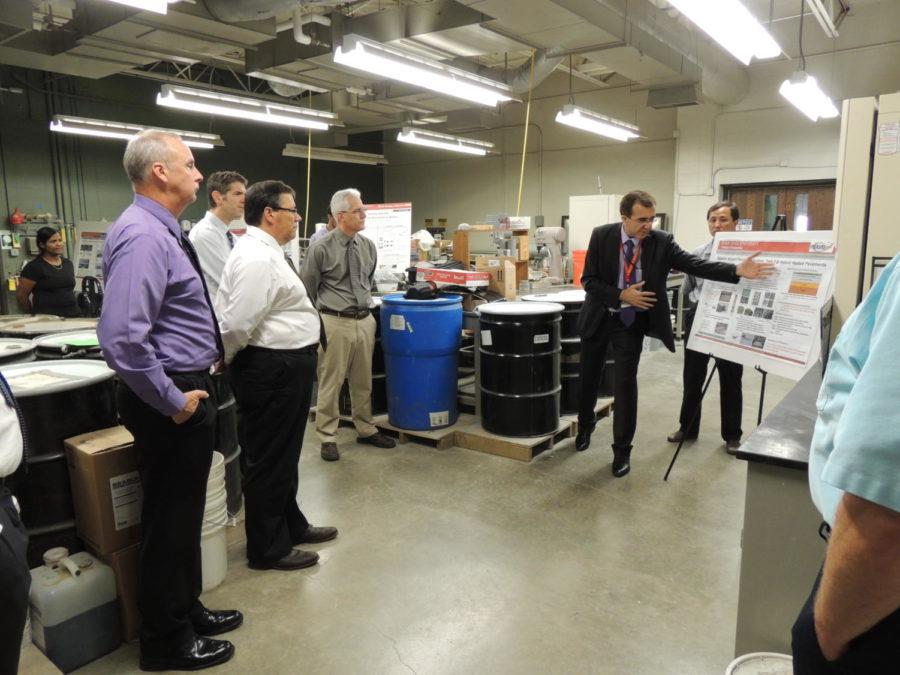FAA grant funds research for heated airport pavements
Halil Ceylan, associate professor of civil, construction and environmental engineering, deliver a presentation on achieving ice- and snow-free airfield pavement surfaces to the PEGASAS delegation on July 26, 2013, during their third-quarter meeting at Iowa State.
October 9, 2013
A team of researchers from Iowa State has been given a Federal Aviation Administration grant for their research on making snow- and ice-free airport pavements.
Halil Ceylan, associate professor in civil, construction and environmental engineering and part of the ISU research team, said that the grant is very prestigious, considering it is from a federal administration.
“Hopefully this will be getting our feet in the door; hopefully it will open up more opportunities and more collaboration with the FAA,” Ceylan said.
The research is being conducted under the Partnership to Enhance General Aviation Safety, Accessibility and Sustainability, a center of excellence for general aviation.
The team at Iowa State is collaborating on this project with a team of researchers from Purdue University.
Part of the project is meant to create an innovative pavement coating that will prevent snow and ice from sticking to the pavement. This coating is called a superhydrophobic coating.
“The basic problem we are trying to solve is the idea of heating pavements so they don’t have to spend so much on snow blowing,” said Peter Taylor, associate director for the Institute of Transportation at Iowa State.
Ceylan stated that creating and applying overlay along with electrical currents would work well to use on existing pavements, instead of having to tear them apart and work underneath the pavement. Their research will prove if this overlay will work and solve the problem.
“The FAA has asked us not to look initially at the runway,” Taylor said. “The issue is where they park the aircraft at the gate.”
Safety and sustainability is one of the main goals the team is working toward in this project.
Ceylan stated that they submitted their proposal in June. However, Ceylan and a graduate student from Iowa State started working on the project in January 2013.
“The full contract only started a month ago,” Taylor said.
The start of the contract was when the FAA began releasing funds and giving their approval.
There are three subtasks for this project, and Iowa State is working on two of them, Ceylan said.
For the past couple of weeks, the team has been collecting research data regarding snow trends at a number of airports.
“We are interested in airports with 45 inches or above of snow,” Ceylan said.
The tests will not only take place at large commercial airports, but at smaller airports as well.
“They wanted some of them to be commercial airports and others to be basically general aviation airports,” Taylor said.
Another part of the project is doing cost analysis on how much money is spent on de-icing products and snow removal, and what problems airports typically encounter during the winter months.
“Which is cheaper? To do what they are doing now or to do the things that we want to do?” Taylor said.
The team has a two-year contract with the FAA for the funding of the project.

















